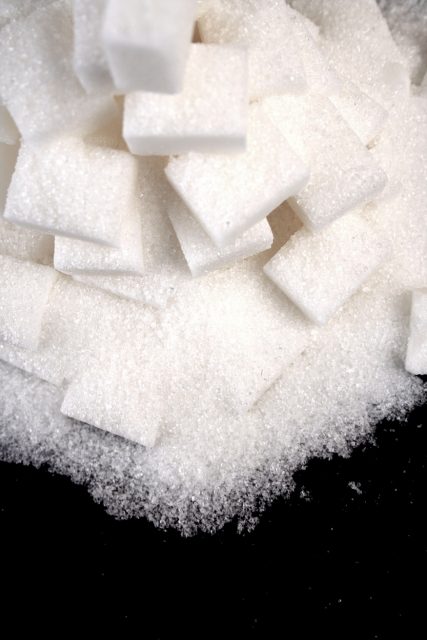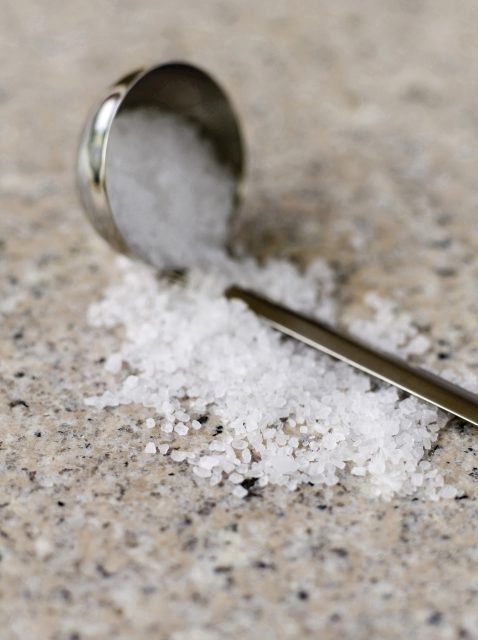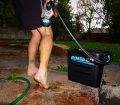![]()
Thank you to Gu Energy Labs for their continued support of this sponsored content.
Author: Heidi Strickler
If I were to tally up the topics of all the nutrition questions I have gotten from runners over the years, the issue of stomach upset would take the cake by a landslide.
Why is it that just about every runner deals with stomach issues, be it diarrhea, bloating, gas, heartburn, sloshy stomach, cramps, and/or indigestion? (Yet somehow every runner thinks that no one else does).
Due to the up and down jarring motion of running, it is more likely to cause digestive issues than other endurance events. The sheer length of time that ultra-runners especially will be out on their feet also causes problems. Imagine eating Thanksgiving dinner then jumping on the trampoline or a pogo stick for several hours – not a pleasant thought, but one many of you can likely relate to. The longer you exercise, and the greater the intensity, the less blood is available to digest your food, which is why most stomach issues don’t happen in the first mile.
Conveniently, most runners are making the same mistakes on the run, which makes for an easy fix:
Mistake #1: Too much simple sugar.
I find this to be the key culprit in stomach issues. Most runners use water, sports drinks, blocks and/or gels, and the occasional fruit or gummy candy for fuel. What do all of these have in common? Simple sugars! Excess simple sugar intake draws water into our intestine, which leads to that notorious gurgle, cramp, and diarrhea. To meet our caloric needs during exercise, simple sugars have to be concentrated beyond what our body can absorb. Every feel like your body is rejecting that 3rd, 4th, or 10th gel? That’s because it literally is.

The Fix:
Fuel with mostly maltodextrin-based products (a complex carbohydrate). These products can meet caloric needs at a much lower concentration that more closely aligns with the concentration of our body’s cells. Maltodextrin also increases our blood sugar quickly, but does not cause a steep spike in insulin, which would lead to a blood sugar crash. The benefit is tri-fold: We can consume less to meet our energy demands, we don’t end up with a bonk, and we avoid a sloshy stomach. Anything over three hours and you should include some source of protein (ideally soy protein, in a ratio of 8:1 carbs:protein) in your fuel plan.
Mistake #2: Improper hydration.
I hear a lot of runners relying on water alone for hydration, or using a sports drink made up of various simple sugars, such as glucose (dextrose), fructose, and sucrose. Both can be problematic, for the same reason as above: concentration. Water’s concentration (or lack of) does not match well with the concentration of our body’s cells. When water makes its way to our digestive tract, it can’t be fully absorbed, and electrolytes are pulled from our cells into our intestine. This means that we are not absorbing all of the water we are drinking, which leaves it sitting in the gut. Enter the stomach slosh. We are also losing electrolytes, which we will eventually pee out. This can make us feel dehydrated, so we drink more water, and exacerbate the cycle; or more seriously lead to hyponatremia and cardiac symptoms. The same problem occurs with simple sugar-based drinks: the concentration (if mixed to meet our calorie needs), is too great, so water is pulled into our digestive tract, and solutes are pulled into our cells. Enter diarrhea and stomach cramps.

The Fix:
The recommended fluid intake in moderate climates is 16-25 ounces of fluid/hour. However, due to decreased absorption during running, you should start small and see what you can tolerate. You can always drink more, but you can’t un-drink (well, you can, but it’s not desirable). It is recommended that you use water only to chase a concentrated liquid or solid fuel, such as Hammer Perpetuem, or a gel, block, or food. At other times, use electrolyte tablets (Endurolytes, Nuun, Gu Hydration) or complex carbohydrate-based drinks that use maltodextrin, cassava, etc. (Heed, Race Rx). Oh yeah – and hydrate adequately on a daily basis – aim for 0.5-0.6 ounces of water per pound of body weight.
Mistake #3: Using salt tablets.
Or pickle juice, or olives, or salt packets – pick your poison, because that is what it is. When we sweat, we lose salt, and we crave salt. But we neglect other electrolytes in the process. Excess sodium alone puts our bodies in a negative feedback loop – the more sodium we take in, the more our body will get rid of through sweat. In addition, excess sodium without adequate potassium can result in cramping, swelling of the arms and legs, and increased blood pressure.

The Fix:
Aim for a full spectrum of electrolytes, including magnesium, potassium, calcium, and no more than 100-600mg sodium chloride/hour. You should also stick to a low-to-moderate sodium diet on a daily basis. The “I sweat a lot so I can eat a lot of salt” thinking is no longer recommended. If you aim for 1,500-2,300mg sodium daily, your body will become more efficient at conserving salt on your runs.
Mistake #4: Trying to eat what your burn.
In our “techie” day and age, most runners will utilize a Garmin or similar device to track pace, mileage, calories burned, etc. While useful in many ways, these can also lead people to overconsume calories, thinking they have to replace what they burn while on the run. This is a BIG NO-NO. The body cannot efficiently absorb and digest that many calories, which results in that too-familiar brick sitting in your stomach, abdominal cramps, and gas.

The Fix:
For most athletes, 150-180 calories/hour on the run is adequate. Larger athletes need more, around 250-280 calories/hour. You also need more calories (and less fluid) when running in colder temperatures, and fewer calories (and more fluid) when running in extreme heat. While this may seem minimal, the body is incredibly efficient at using its energy stores, and if we train it to preserve fuel, it will. A safe estimate is to take in 1/3 of what is lost, for calories, fluids, and electrolytes.
Lastly (a) trial everything before your race. On runs that mimic the distance and intensity of your race. And (b) be flexible, and don’t be afraid to adjust mid-race if conditions change.
Have more questions? Tune in for Monday’s live Nutrition Q&A on the Trail and Ultra Running Facebook page with me, Heidi Strickler, Registered Dietitian.
Interested in a nutrition periodization guide with your training? Hoping to keep the weight off as we approach the holiday season? Want an athlete-based meal plan to support your training?
Email heidi@experiencemomentum.com .


















Great article!
[…] How to set yourself up for a bad stomach in an ultramarathon. What do you think of the recommendations and claims? […]
Can you give examples of real food containing maltodextrin that travel well please. Thanks for great article.
Do you mean to use for racing?
I came across this article because I recently had stomach issues for the first time during a run. (I suspect it could be that I consumed ibuprofen before my run, not followed with something that would coat my stomach, due to a strained knee ligament.)
Simultaneously, I read something that starkly contrasts some of the contents of this article. I’m not saying this is right or wrong, because I honestly don’t know. But, the other article seems to be (?) written by a nutrition expert. Read and consider. It’s possible, I am misunderstand or misinterpreting. Maybe you can clear that up.
http://firstendurance.com/carbohydrates-and-endurance-clearing-up-the-confusion/